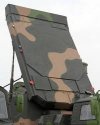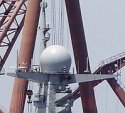According to Janes Defense Type 052D destroyer 119 Guiyang and another Type 054A frigate 542 Zaozhuang has entered PLAN service in late february.
Type 052D destroyer and Type 054A frigate enter service with PLAN
Photographs circulating on Chinese social media indicate that a Type 052D (Luyang III-class) destroyer (pennant number 119) and a Type 054A (Jiangkai II-class) frigate (pennant number 542) were commissioned in late February.
Accompanying comments said the ships were named Guiyang and Zaozhuang, respectively, and state that they entered service with the People's Liberation Army Navy's (PLAN's) North Sea Fleet on 22 February.
The Type 052D destroyers displace over 7,000 tonnes and are 157 m in length. Sixty-four vertical launch tubes, which can fire HHQ-9 surface-to-air missiles and the anti-ship variant of the YJ-18A long-range cruise missile, are installed in two grids: forward and midships.
The lead shipyard for building the Type 052D is Jiangnan Changxingdao, where the first of class was launched in August 2012. However, Guiyang - the eighth Type 052D to be launched overall - was the first to be built by the Dalian Shipbuilding International Company (DSIC). The vessel first entered the water in November 2015, with two further Type 052Ds launched by DSIC in August 2016 and June 2017.
Unconfirmed reports state that the 17th overall Type 052D destroyer was launched at Jiangnan on 23 February, where three more ships of the class are being fitted out post-launch.
Zaozhuang , is the PLAN's 30th Type 054A frigate and appears to be the final ship of the class. It was the 15th to be built at the Huangpu shipyard in Guangzhou, with the remainder being constructed at the Hudong-Zhonghua shipyard in Shanghai.









